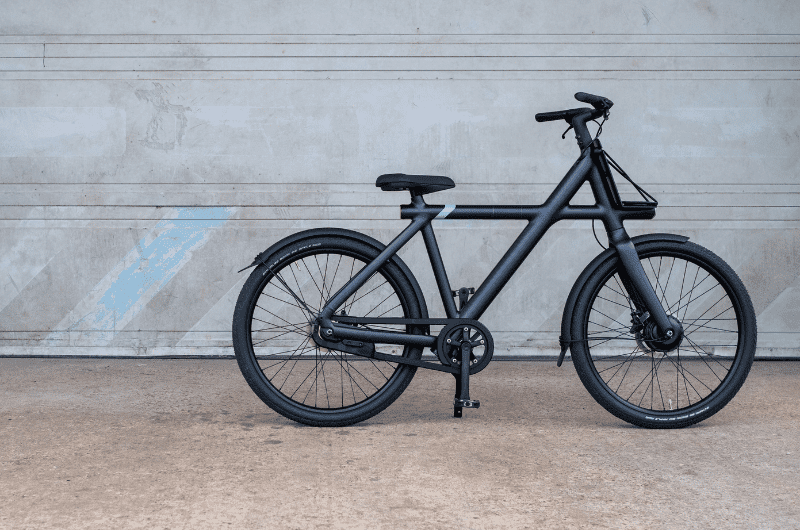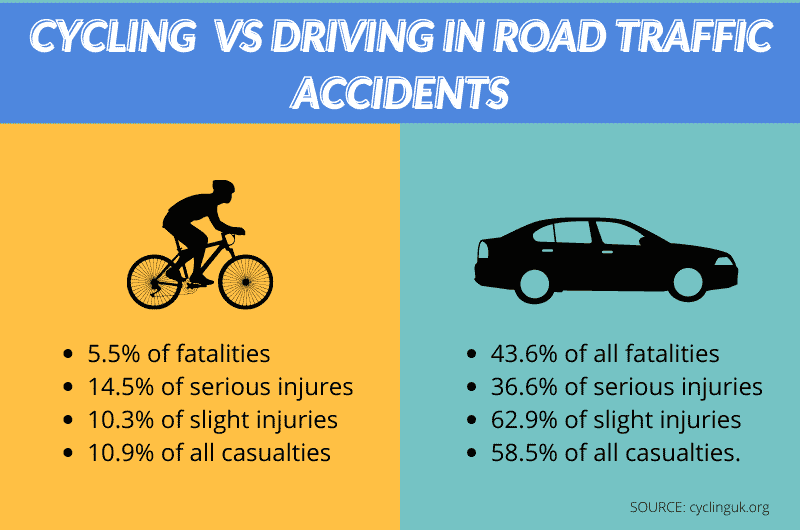Cycling is one of the healthiest activities you can do, however, there are still some persistent myths that suggest otherwise. Most of these are completely false, and in some cases the exact opposite is true!
Read on as we bust the top cycling myths.
“Cycling is Bad for Your Balls”
This might be the most common myth of all – but there’s no evidence whatsoever to back it up!
Can Cycling Reduce Sperm Count?
You might have heard that continued pressure on your perineum reduces sperm count (due to decreased blood flow) but this link is purely hypothetical. In fact, cycling is more likely to increase your sperm count and your general reproductive health.
That’s because frequent exercise, being active, and eating a healthy diet actually improve sperm count. The healthier you are, the better your reproductive health is. Cycling is one of the best forms of all-body exercise so it’s a great place to start if you want to boost your physical wellbeing.
Does Cycling Cause Erectile Dysfunction?
Another popular myth, the same rationale (decreased blood flow in the perineum) lies behind the idea that cycling causes erectile dysfunction. We’re pleased to inform you that this myth is false and (much like with sperm counts) the exact opposite might even be true.
Exercising frequently and leading an active lifestyle are proven to boost your reproductive health. People suffering from high blood pressure and obesity are far more likely to suffer from erectile dysfunction than cyclists. If you’re really worried, you can always opt for a non-nose bike seat.
“Cycling Causes Piles”
Piles are painful and can be serious if left untreated. The idea that sitting on a saddle for a long time causes piles is common, but it’s false.
Does Cycling Cause Hemorrhoids?
The short answer is no. Sitting on a saddle does reduce blood flow to the area, but this isn’t enough to cause piles. Of course, if you’re already suffering from hemorrhoids, cycling can aggravate the problem, but sitting on a saddle won’t cause the condition.
“Electric Bikes Are Lazy”
As the popularity of electric bikes soars (with some forecasters suggesting that they might one day overtake manual bikes), traditionalists baulk at the idea of electrically assisted cycling.
Will Riding an Electric Bike Get Me Fit?
Electric bikes are a fantastic way to get fit. The motor doesn’t mean that you don’t have to peddle; it simply matches your pace and offers some help on more difficult sections. Studies have found that exercise gains are similar on e-bikes: riding burns calories and builds muscle mass.
E-bikes also make cycling more accessible, are generally faster (and excellent for the commute) and will help new riders get to grips with the road. They’re a popular route into the world of cycling that will dramatically improve your health.

“Cycling Causes Heart Attacks”
Perhaps the most frightening myth on the list, it should come as no surprise to learn that cycling in itself does not cause heart attacks.
Does Cycling Cause Heart Attacks?
Any physical activity carries the risk of heart attack if you already have poor heart health. If, for example, you have high blood or heart disease, the increased pressure of exercise will heighten your risk.
Cycling is no different from any other form of exercise, though, and doesn’t carry additional risks for a healthy person. In fact, the opposite is true…
Is Cycling Good for Your Heart?
Absolutely yes! Regular cycling is amazing for heart health. It reduces the risk of coronary heart disease considerably, especially in those over 50. Cycling boosts heart and lung health, lowers your resting pulse rate and decreases blood pressure.
Cycling also increases blood circulation and, as your fitness level rises, makes you more likely to take on other forms of exercise. Light cycling is even recommended as one of the best exercises to partake in after a heart attack.
“Cycling is Bad for Your Knees”
Another pervasive myth, many worry that excessive cycling will inflame their knee joints. Proper cycling poses no risk to your knees and will actually help with joint health.
Is Cycling Bad for Your Knees?
Although it might seem like cycling works the knees hard, it’s actually considered a low-impact activity that’s good for your joints. Cycling is even recommended for people suffering from arthritis and other joint problems.
The benefits of cycling on general health have a knock-on effect. Obesity, for example, puts excess strain on the knees, so keeping fit by cycling is an excellent way to keep knee pain at bay. There is one caveat, though. Suddenly cycling for longer or harder than you’re used to can inflame joints, so it’s worth scaling up your endurance gradually rather than all at once.

“Cycling Causes Muscle Loss”
Many cyclists are skinny, which has led some people to conclude that cycling must cause muscle loss. Fortunately, this isn’t true either.
Does Cycling Cause Muscle Loss?
This is one of the biggest cycling myths! Studies have shown that cycling doesn’t reduce muscle mass in the same way as other long distance activities like running. Cyclists burn calories (losing significant weight and fat) but that doesn’t translate to skeletal muscle loss.
Why Are Cyclists So Skinny?
Cyclists are skinny because cycling can be broadly classified as an endurance sport. This means that it burns enormous amounts of calories. Long distance cyclists are notoriously skinny in part because at a competitive level they have to be: excess weight slows them down and creates drag.
More than that, though, the amount of energy required to cycle over long distances simply burns through calories and fat. Cycling is one of the most efficient ways to lose weight without sacrificing muscle mass.
“Cycling Causes Prostate Cancer”
Another scary myth, this isn’t something you have to worry about. Cycling can even lower the risk of some cancers by keeping you fit and healthy.
Can Cycling Cause Prostate Cancer?
Cycling in itself does not cause or lead to prostate cancer. A healthy lifestyle involving regular exercise cuts your risk factors for most cancers quite dramatically. Keeping your body in good physical condition is important.
That said, an ill-fitting saddle can cause inflammation of the prostate, so it’s vital to invest in a quality saddle that works for you. Leather saddles are notoriously comfortable (since they mould to your body shape). Many cyclists love gel saddles, and getting a cut-out can reduce pressure on the prostate.
“Cycling Causes Back Pain”
Back pain is something that many people associate with cycling, and some even assume that it’s inevitable. Don’t be fooled: cycling doesn’t have to, and never should hurt your back.
Does Cycling Cause Back Pain?
This is one of the more pervasive cycling myths. The short answer to this question is that cycling shouldn’t cause back pain, but it can. It all depends on how you cycle and the kind of gear that you’re using.
Cyclists who complain of back pain invariably have an incorrect bike fit, the wrong kind of saddle, or a setup that doesn’t match their physique. When this happens, cyclists assume that back pain is inevitable, rather than making simple adjustments to their bike fit. Riding style can also be to blame, along with trying to push yourself too hard too early.
Can Cycling Cause Sciatica?
Similar to the issue of back pain, cycling shouldn’t cause sciatica but (and as is the case with any physical exercise performed incorrectly) there’s a chance that it can cause problems. The risk is dramatically elevated if you’re using a hard, ill-fitting saddle.
Hard saddles (or ones that don’t fit) can increase pressure on your spine and sciatic nerve. Poorly fitted handlebars will do the same. That’s why getting the right bike fit is so important. Cycling should be comfortable and fun. Fit the right saddle and you won’t have any problems.
“Cycling is Hard”
Cycling might seem hard to the uninitiated, but in truth, it’s as hard as you make it and (like all forms of exercise) gets easier the more you do it. The more you cycle, the fitter and more confident you will inevitably feel.
Depending on your fitness and how often you cycle, it can take around two to three months to feel completely comfortable in the saddle. Cycling gets easier because your fitness, strength, circulation and energy levels all increase with practice. You’ll also get better at route planning and develop a sound technique.
There are a few ways to flatten the learning curve. The most important thing is to ease into cycling. Don’t suddenly take on long rides or steep hills. Choose simple (flat) routes, wear the right clothes, stay hydrated and listen to your body. Include rest days and remember that this is a marathon, not a sprint.

“Cycling is Dangerous”
Another common myth. No exercise comes completely without risk but the risks of leading a sedentary, inactive life far, far outweigh any associated with cycling. Bike lanes, new laws and safety equipment mean that cycling is nowadays much safer than most people imagine.
In fact, the chances of getting injured are just 5% per 1000 hours of cycling and even less for fatalities – down at an encouraging one per nine million rides. Those figures compare favourably with other pursuits generally considered “safe.” More pedestrians are killed in the UK than cyclists, cycling is safer than running and the fatality rate for footballers is 4.9% higher than for cyclists.
There’s never been a safer time to cycle.
Benefits of Cycling
The benefits of cycling are almost too numerous to list. Heart health, lung capacity, resting pulse rate, muscle mass, general fitness and calorie burning are all great reasons to cycle. People who commute on a bicycle get the most benefits.
Using a bicycle to commute means that you’re exercising every single day. Commuting by bike keeps you active and helps the environment too, by cutting emissions. Ignore the myths. Cycling will improve your physical and mental health. It’s one of the most effective, safest and fun ways to keep fit!
The post Cycling Myths: 10 “Disadvantages” Exposed appeared first on Discerning Cyclist.
